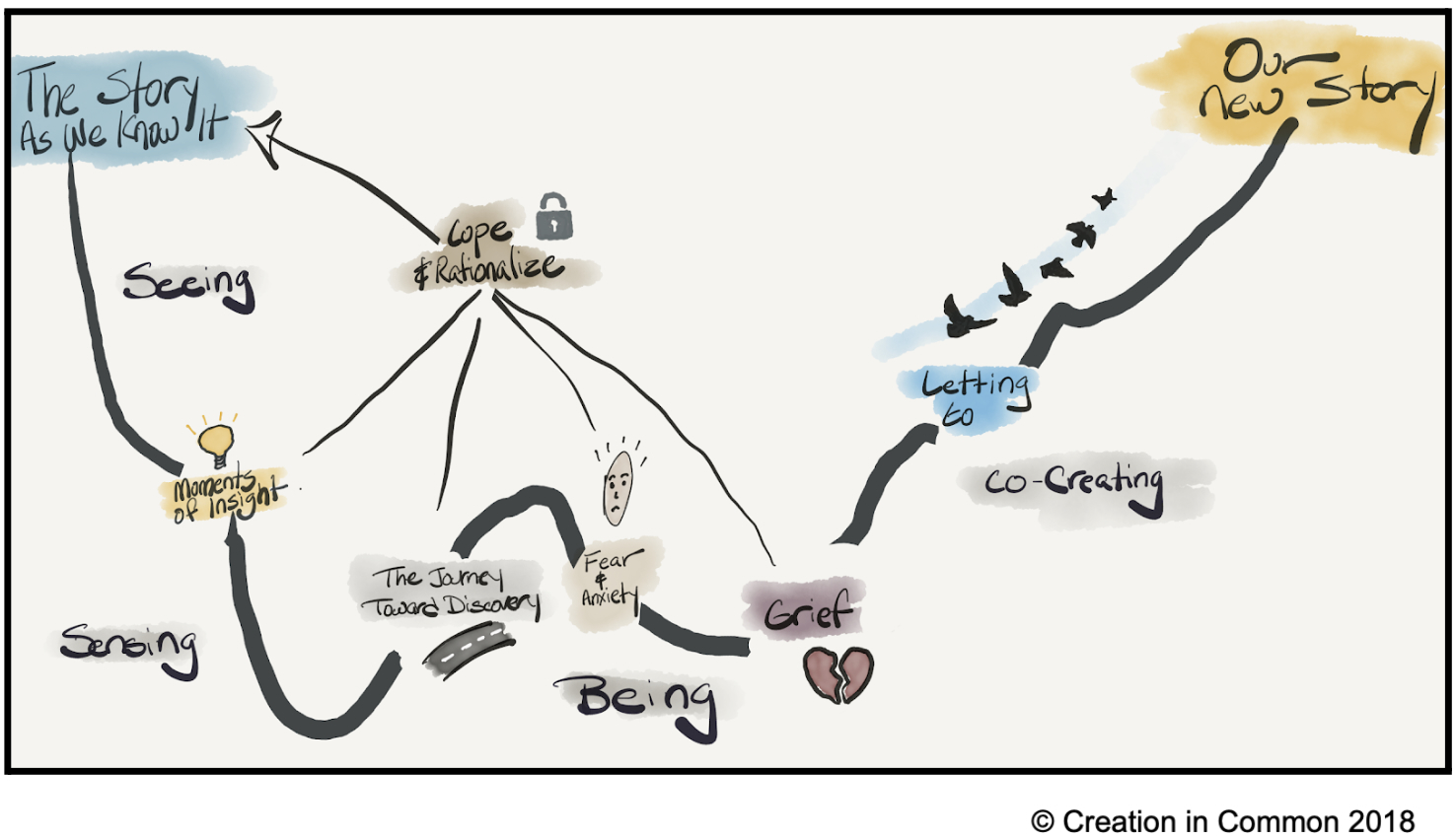Shared creativity can move us from scarcity to abundance. Here’s how:
1. Seeing Together: Oxygen Over Urgency
When organizations face pressure, the reflex is to act quickly. But fast decisions made in narrow frames often reinforce the very problems we’re trying to solve.
Seeing together invites a pause. It helps teams slow down and name what’s actually happening—not just the symptoms, but the patterns, tensions, and unspoken stories. It opens space for people to bring their full perspectives, not just their roles. It replaces evaluation with curiosity.
When we start by seeing our strengths, not just our deficits, we bring oxygen into the room. We remember that we’re more than the challenge we’re facing. This is the first spark of abundance.
2. Sensing Together: Learning Through Discovery
Once we see the landscape clearly, we can begin to sense what’s shifting beneath the surface. This is not about brainstorming or strategizing. It’s about noticing subtle disconnects, unspoken values, emerging needs, or community signals that are easy to miss when we’re rushing to solve.
Sensing requires humility. It means loosening our grip on old narratives and being willing to let go of assumptions—even the ones that once served us well. Sometimes, the insight we need is hiding in plain sight, waiting to be seen with new eyes.
Insight doesn’t come from having all the answers. It comes from holding space for real questions—and realizing that abundance begins with learning.
3. Being Together: Navigating the Unknown
This is the most challenging and powerful part of the journey. Being together means staying present when the path isn’t clear, when decisions are uncomfortable, when old truths don’t hold and new ones haven’t fully formed.
It’s in this phase that organizations confront what they must release to move forward. Programs, practices, beliefs, even identities. This is a liminal space, where trust matters more than certainty and collaboration becomes the only viable strategy.
The goal here isn’t to push forward. It’s to stay. To listen. To hold tension long enough for something new to emerge.
And in that moment of staying—in community, in dialogue, in vulnerability—we find abundance not as a goal, but as a shared experience.
4. Creating Together: Stepping Into the New Story
Only after seeing, sensing, and being together can we co-create with clarity. Now, action is not reactive—it’s responsive. It’s rooted in shared values, in real insight, and in the relationships that were built through the process.
Co-creation is more than implementing a plan. It’s about embodying a story—a shared understanding of what matters and what’s possible. It’s about building structures, systems, and strategies that align with the future we’re striving towards.
This is where abundance becomes tangible…where imagination, trust, and collaboration take form through what we build together.
Letting Go to Let In
To move from scarcity to abundance, we don’t need to have all the answers. We need to change the questions we ask, the assumptions we hold, and the way we show up with each other.
Shared creativity is a practice—one that helps us reimagine what’s possible, not just for our organizations, but for our communities and the people we serve.
So the next time you find yourself staring into the fear of not-enough, ask: What might we see, sense, be, and create—together?
Source Material: The above approach is adapted from MIT Professor C. Otto Scharmer’s Theory U


